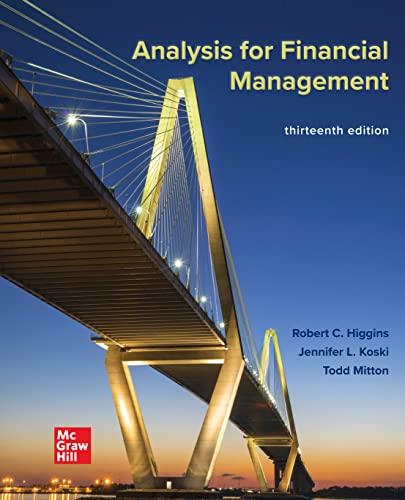This is a more difficult but informative problem. James Brodrick & Sons, Inc., is growing rapidly and,
Question:
This is a more difficult but informative problem. James Brodrick & Sons, Inc., is growing rapidly and, if at all possible, would like to finance its growth without selling new equity. Selected information from the company’s five-year financial forecast follows.
Year 1 2 3 4 5 Earnings after tax ($ millions) 100 130 170 230 300 Capital investment ($ millions) 175 300 300 350 440 Target book value debt-to-equity ratio (%) 120 120 120 120 120 Dividend payout ratio (%) ? ? ? ? ?
Marketable securities ($ millions) 200 200 200 200 200 (Year 0 marketable securities = $200 million)
a. According to this forecast, what dividends will the company be able to distribute annually without raising new equity and while maintaining a balance of $200 million in marketable securities? What will the annual dividend payout ratio be? (Hint: Remember sources of cash must equal uses at all times.)
b. Assume the company wants a stable payout ratio over time and plans to use its marketable securities portfolio as a buffer to absorb year-to-year variations in earnings and investments. Set the annual payout ratio equal to the five-year sum of total dividends paid determined in question
(a) divided by total earnings. Then, solve for the size of the company’s marketable securities portfolio each year.
c. Suppose earnings fall below forecast every year. What options does the company have for continuing to fund its investments?
d. What does the pecking-order theory say about how management will rank these options?
e. Why might management be inclined to follow this pecking order? LO.1
Step by Step Answer:

Analysis For Financial Management
ISBN: 9781260772364
13th Edition
Authors: Robert Higgins, Jennifer Koski, Todd Mitton





